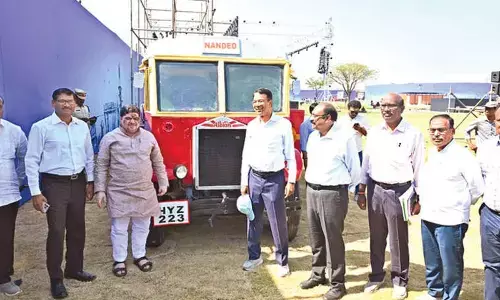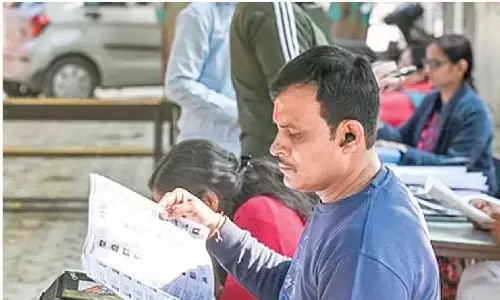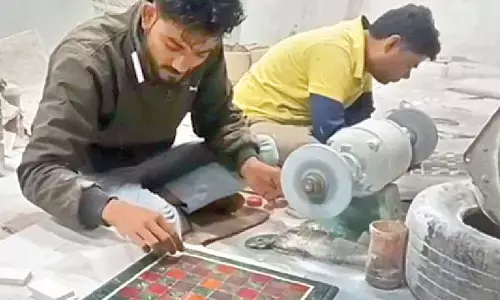3rd century Buddhist remains found in Guntur district

A third century AD Buddhist remains of a circular stupa and pillared pavilion Sila mandapa datable to the Ikshvaku times were unearthed at Kondaveedu fort, said Dr E Sivanagi Reddy, a Buddhist archaeologist and CEO, Cultural Centre of Vijayawada and Amaravathi CCVA here on Sunday
Vijayawada: A third century AD Buddhist remains of a circular stupa and pillared pavilion (Sila mandapa) datable to the Ikshvaku times were unearthed at Kondaveedu fort, said Dr E Sivanagi Reddy, a Buddhist archaeologist and CEO, Cultural Centre of Vijayawada and Amaravathi (CCVA) here on Sunday.
Dr Reddy along with K Siva Reddy, convener of Kondaveedu Development Committee and Subhakar Medasani, secretary, Amaravathi Buddha Vihara visited the site as per the instructions of Civil Supplies Minister Prattipati Pulla Rao who is directly supervising the development works for Kondaveedu Festival.
The remains of the stupa were found underneath the sunken and dilapidated Siva temple of the Reddy period during the process of dismantling it for reconstruction.
Interestingly, Sivanagi Reddy noticed the stupa structure measuring 12.5 feet in diametre, 4.5 feet in height consisting of layers of well dressed Palnadu lime stone which the Buddhists preferred.
The bottom most layer was carved with lotus flower design representing the mature phase of typical Amaravathi School of Art as seen at the pedestal of the world famous Nagarjunakonda Buddha image, thus giving clue to conclude that the stupa was built during the Ikshwaku period.
Dr Reddy and the team appealed to the State Department of Archaeology and Museums to relocate and construct the dismantled Siva temple and at another place and protect the Buddhist stupa.
Dr Reddy and team visited the spot from where Narasimha Swamy temple was dismantled.
The cave which housed the Narasimha idol was also a Buddhist cave meant for rainy retreat (Vassavasa) used by the monks during the 4 months of the rainy season. Dr Reddy picked up a brick measuring 58 x 27x 7 cm of the Ikshwaku times.
These evidences clearly reveal that Kondaveedu was a Buddhist settlement 2,000 years ago which later, during the period of Anavema Reddy, was selected for their capital city enclosed by huge and lengthy fortification walls with two entrances on east and west sides in 14th century AD, said Dr Sivanagi Reddy.


















